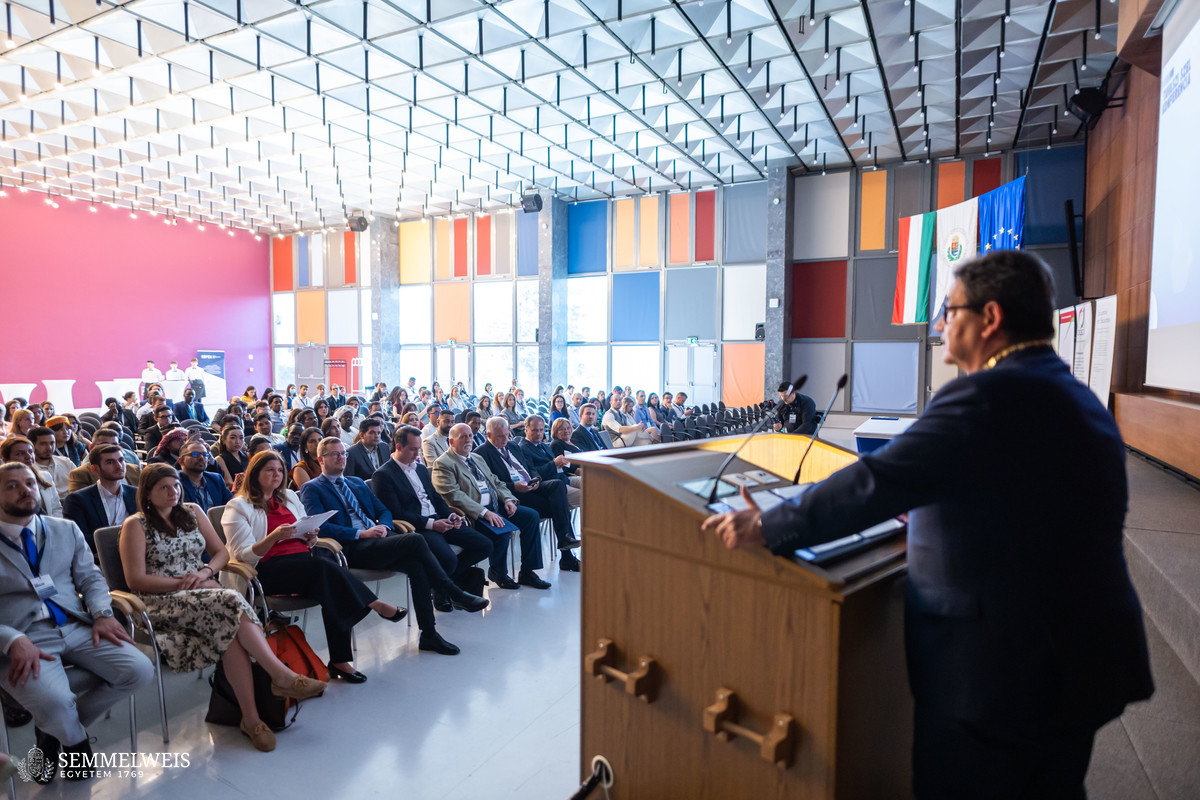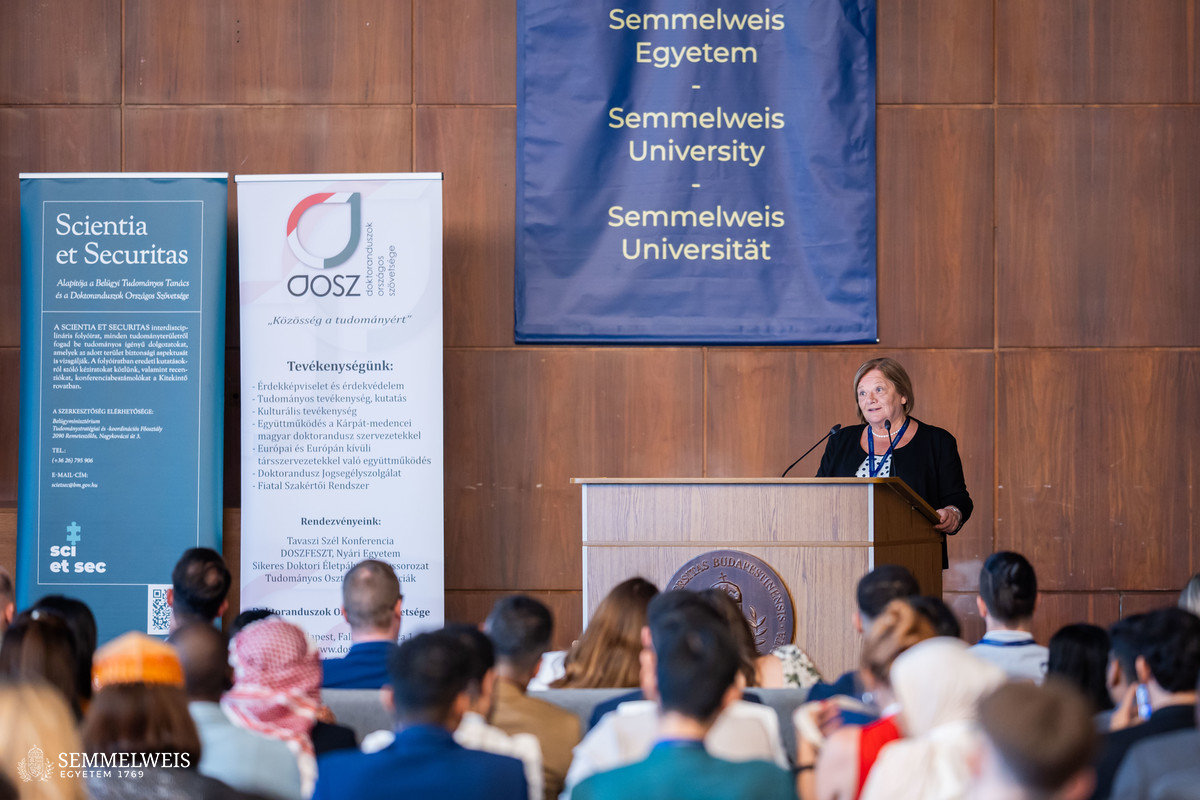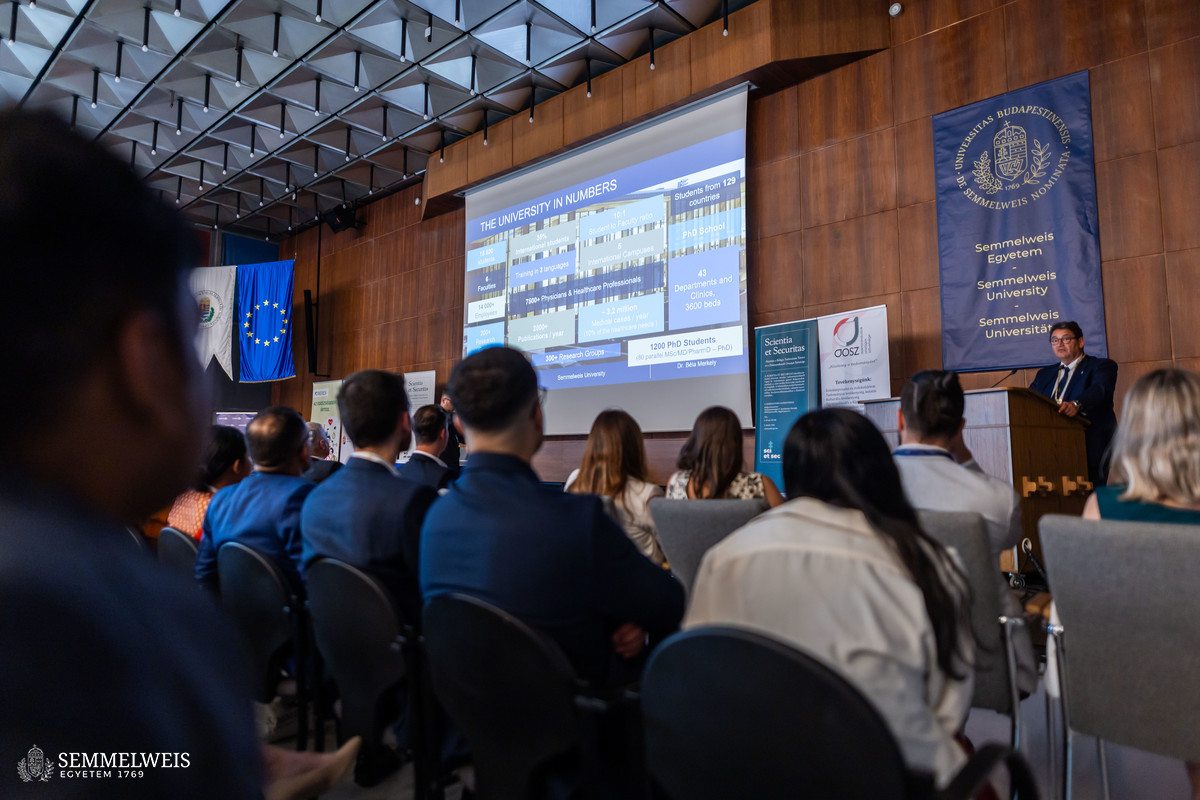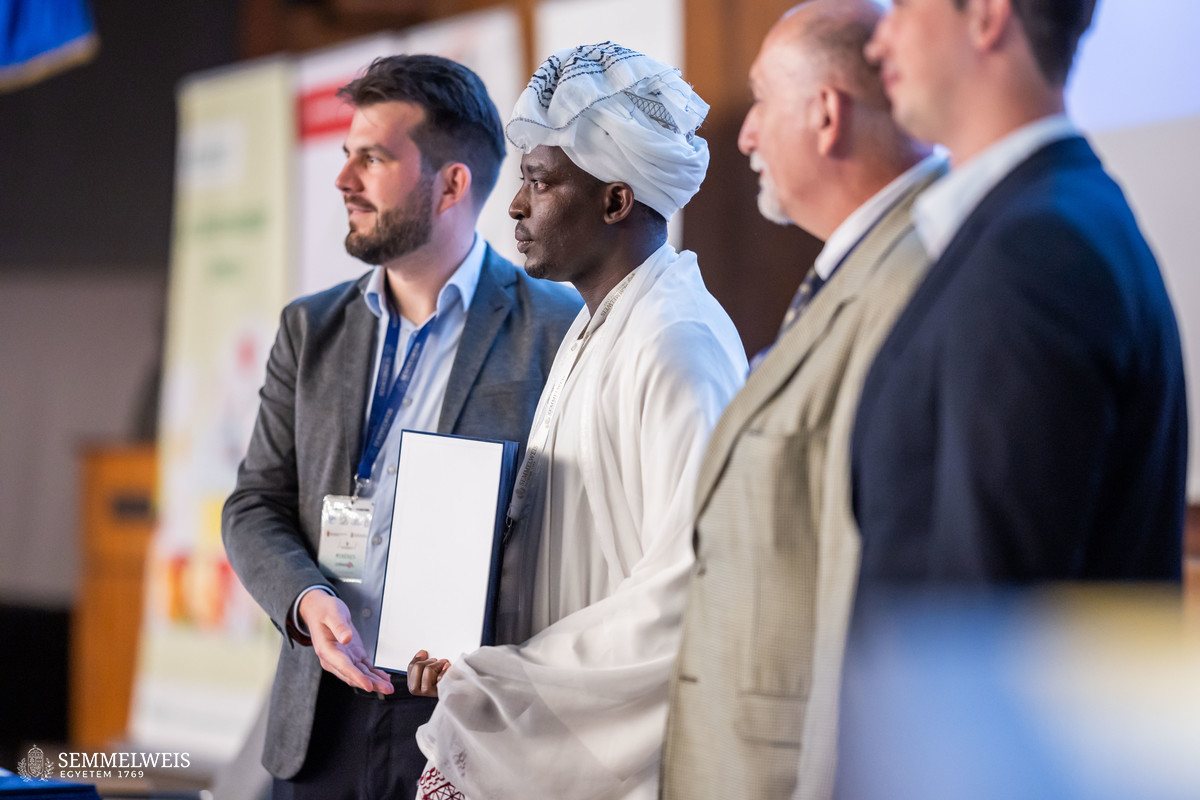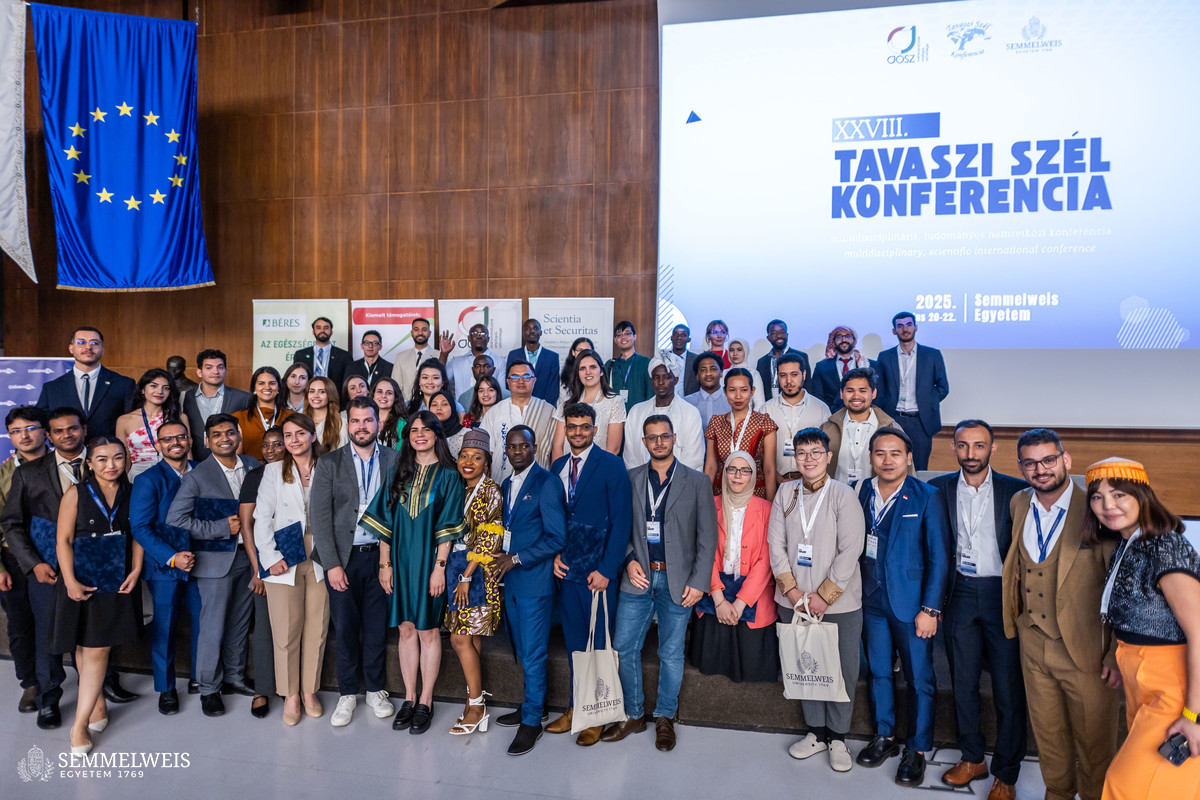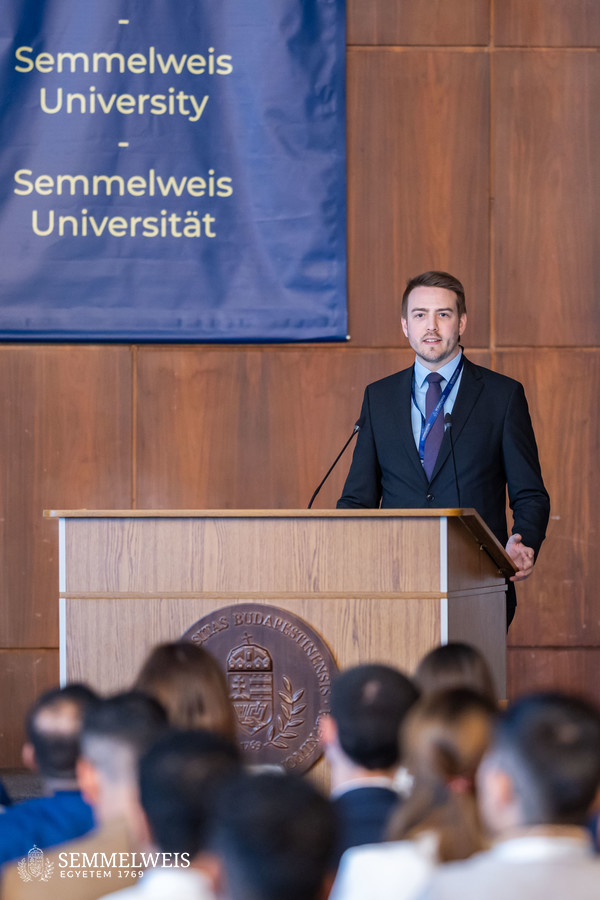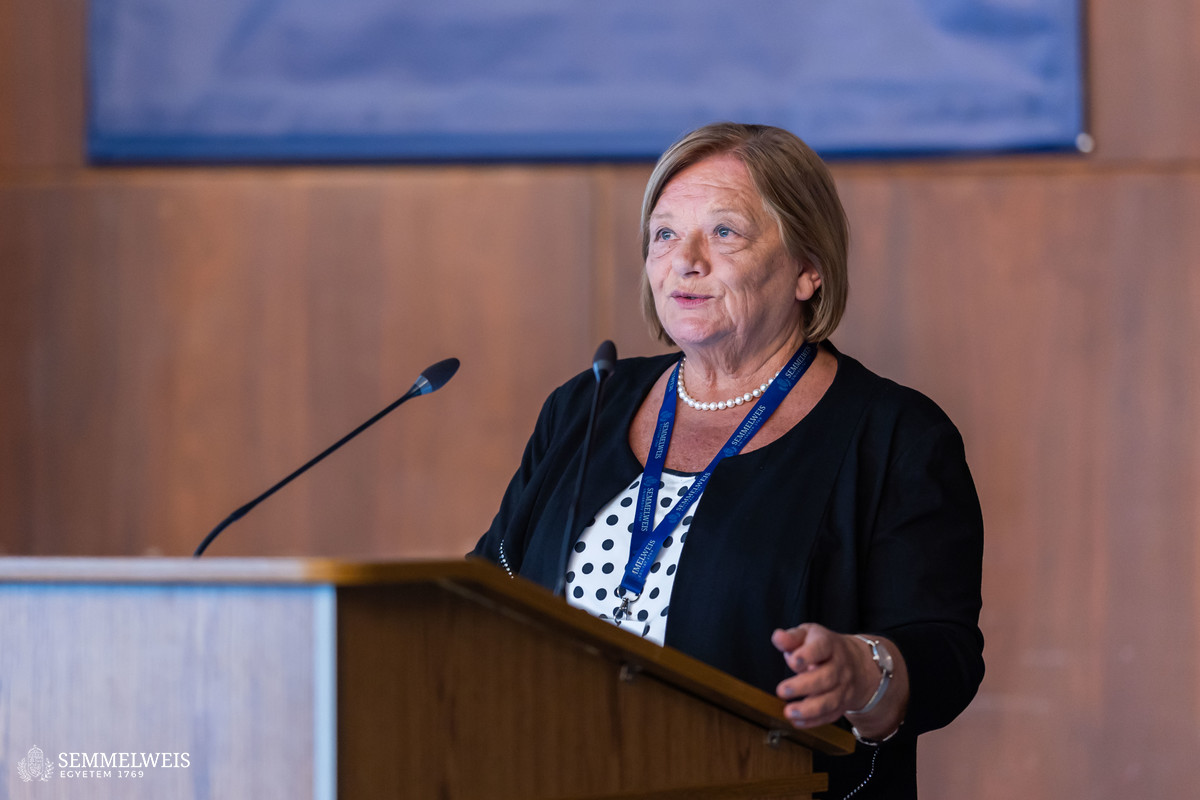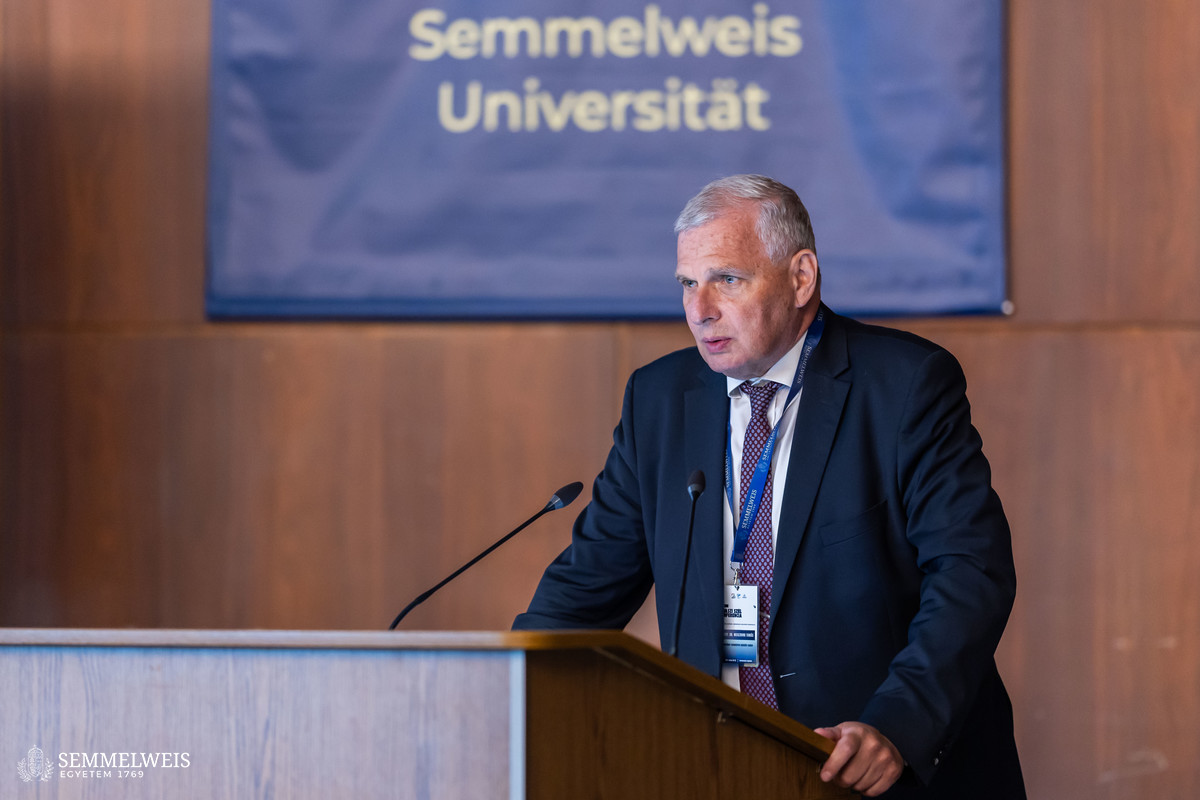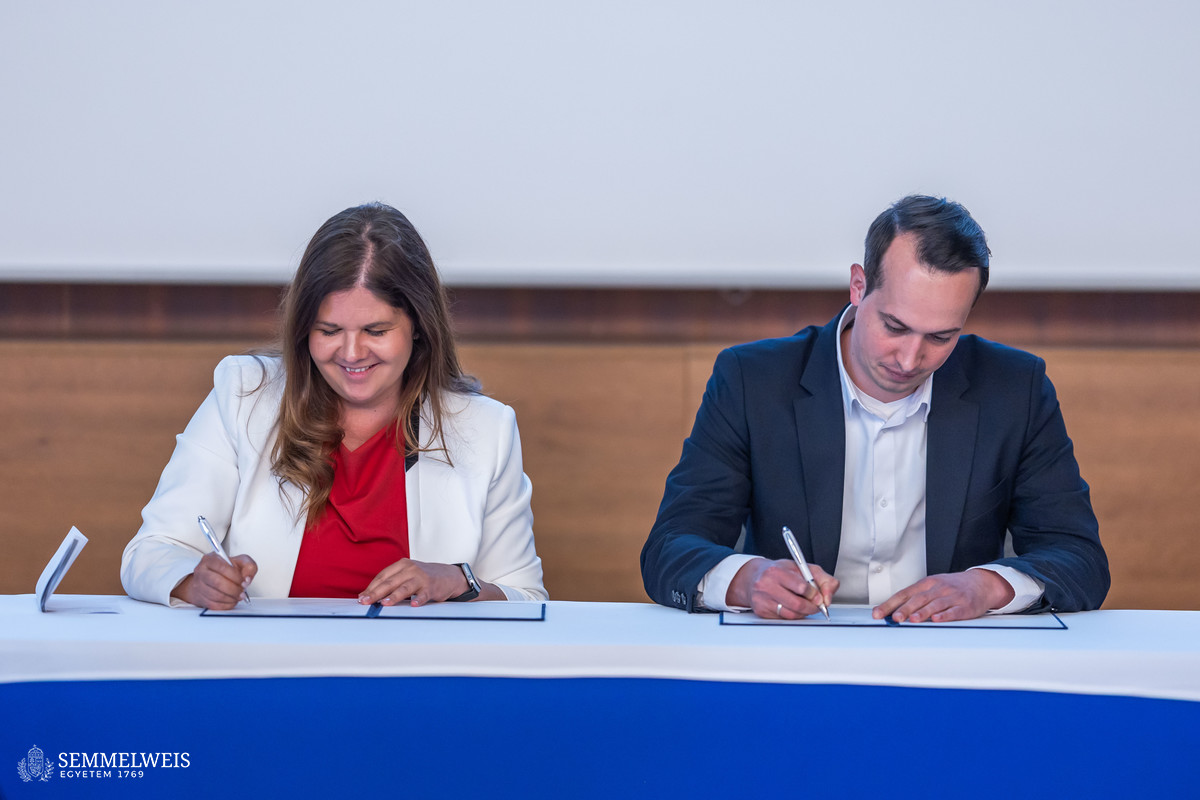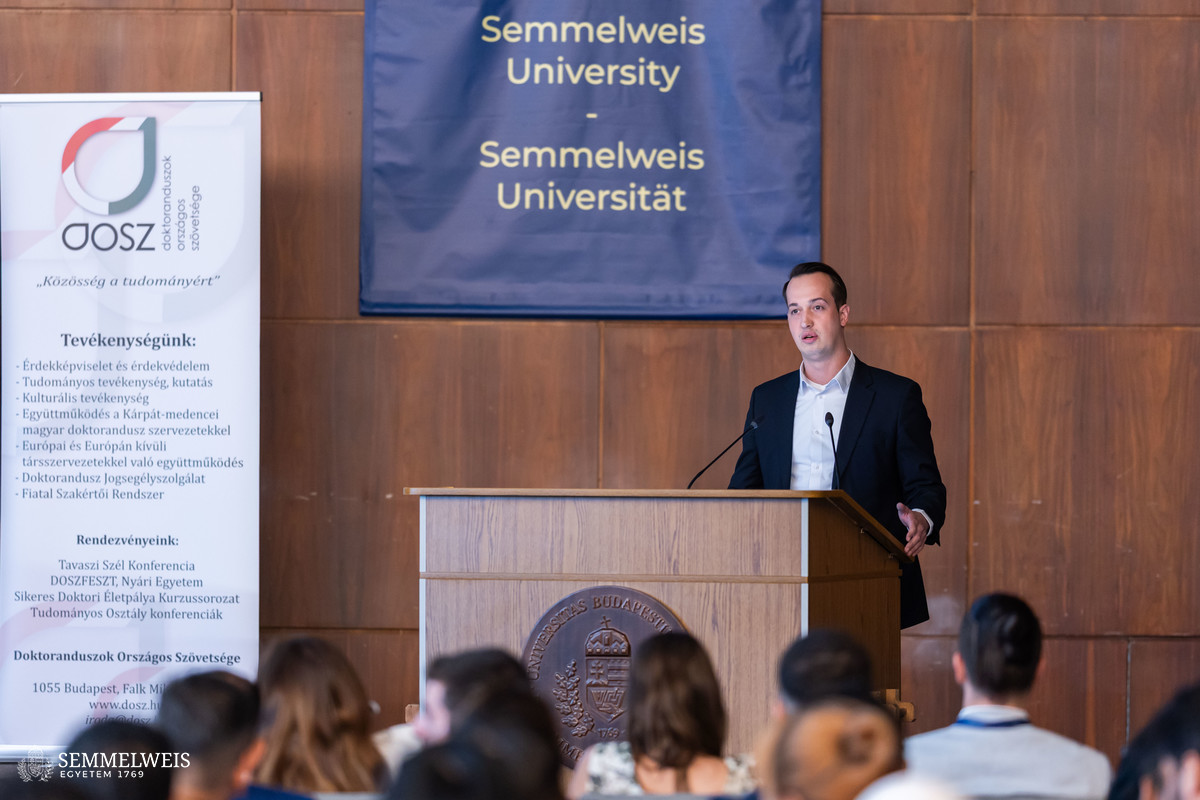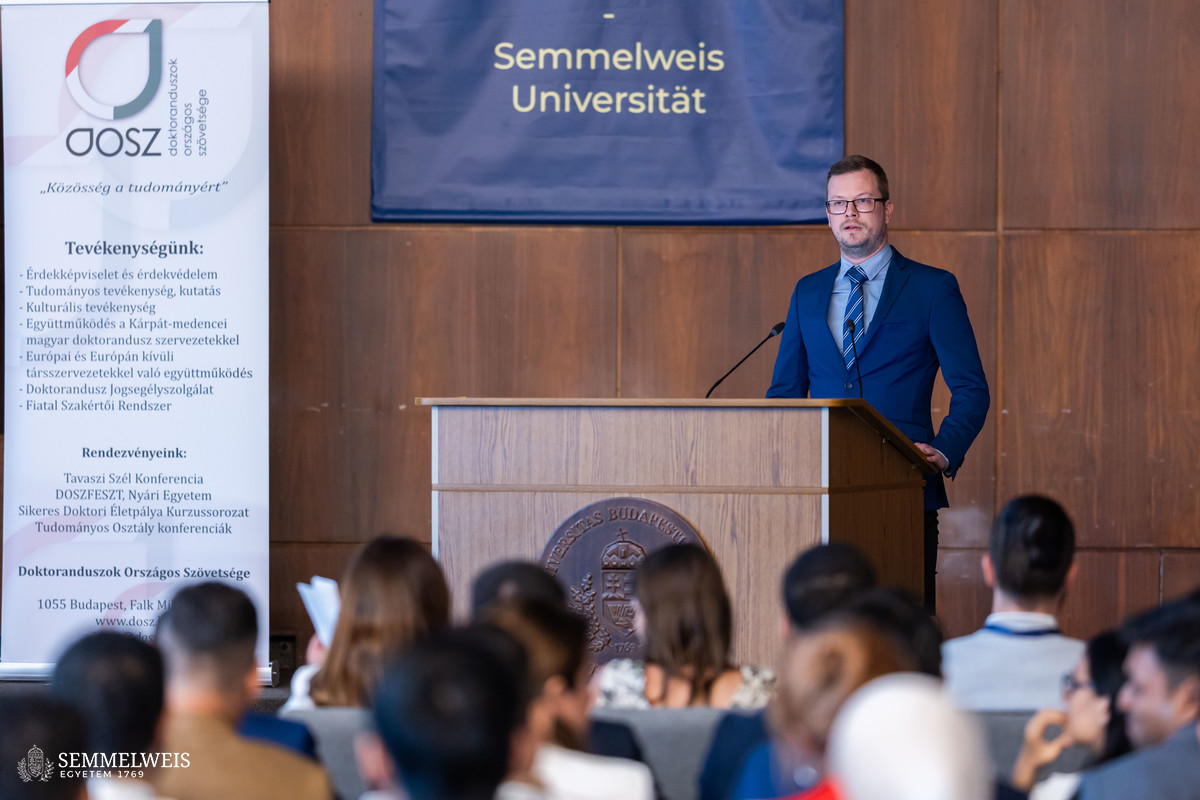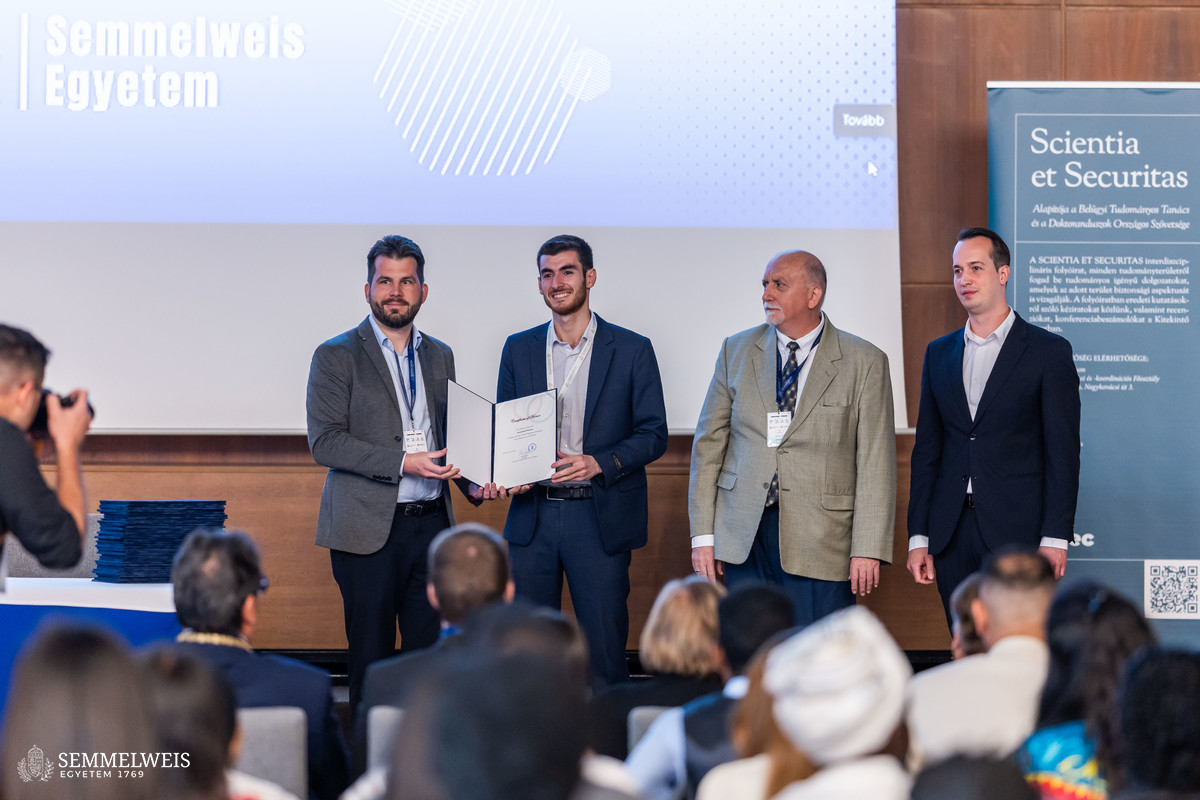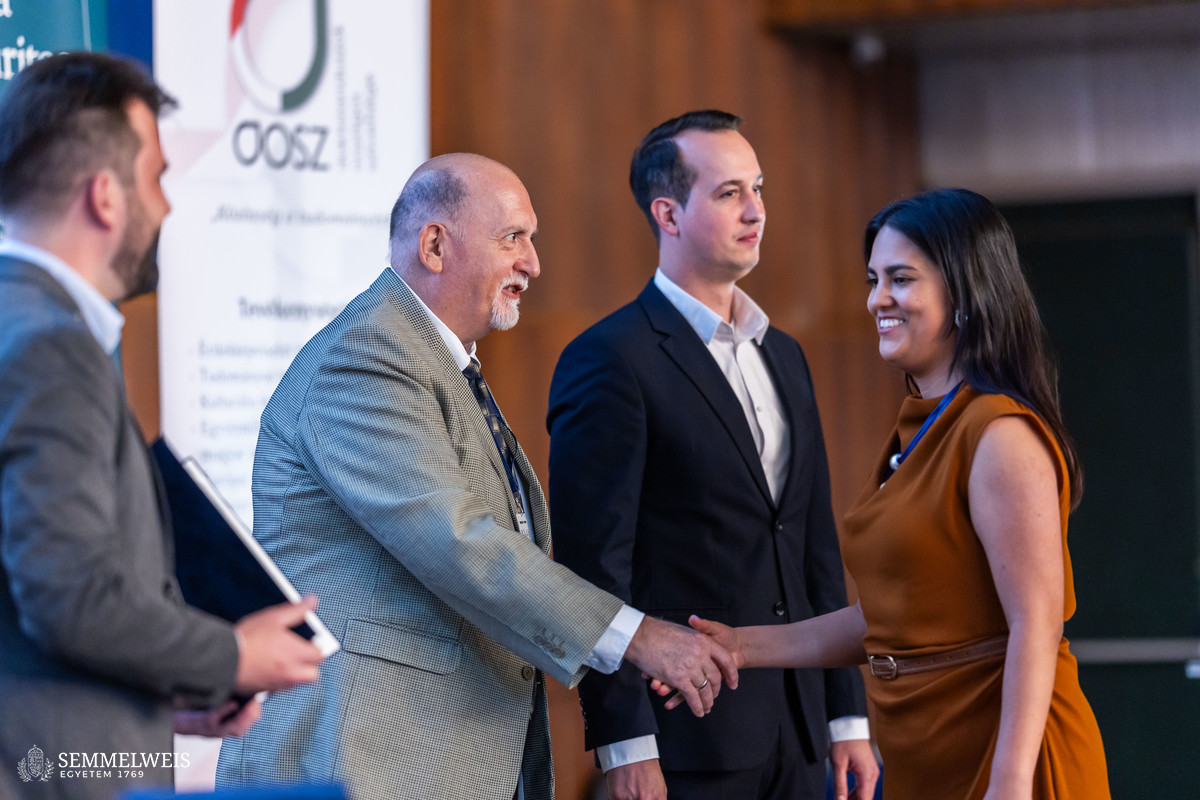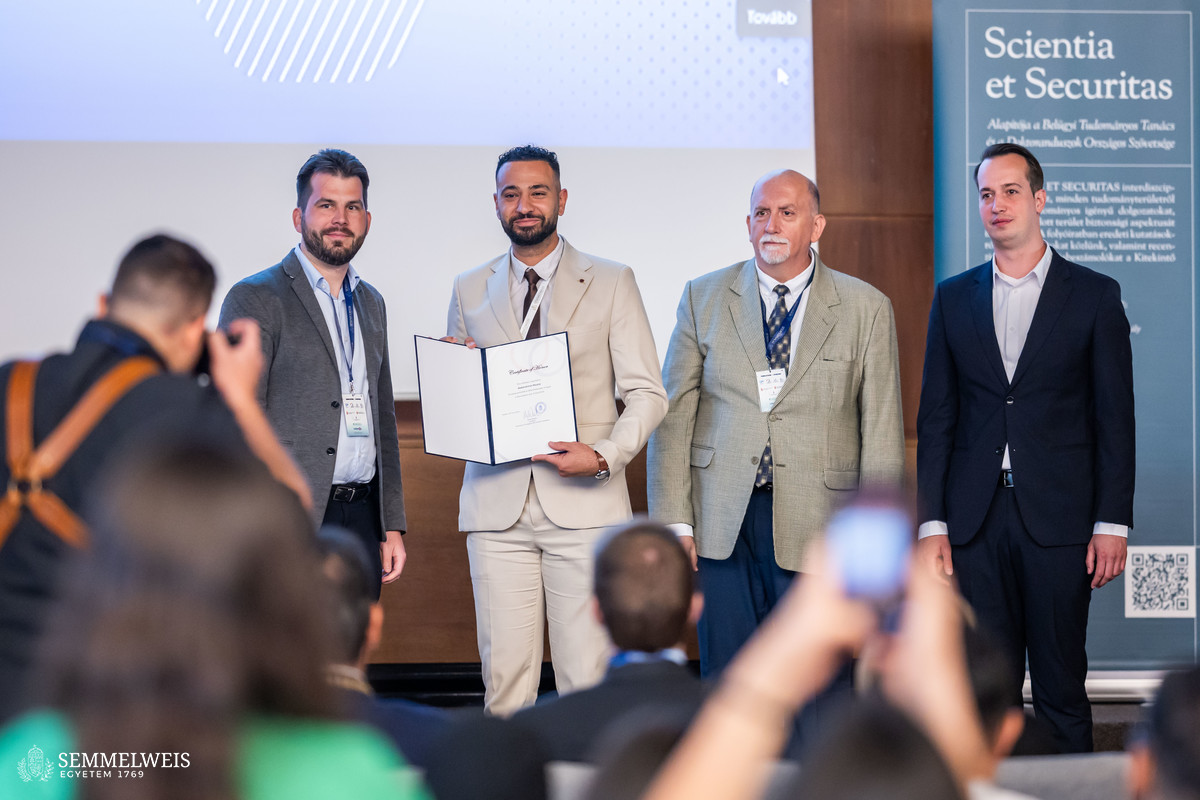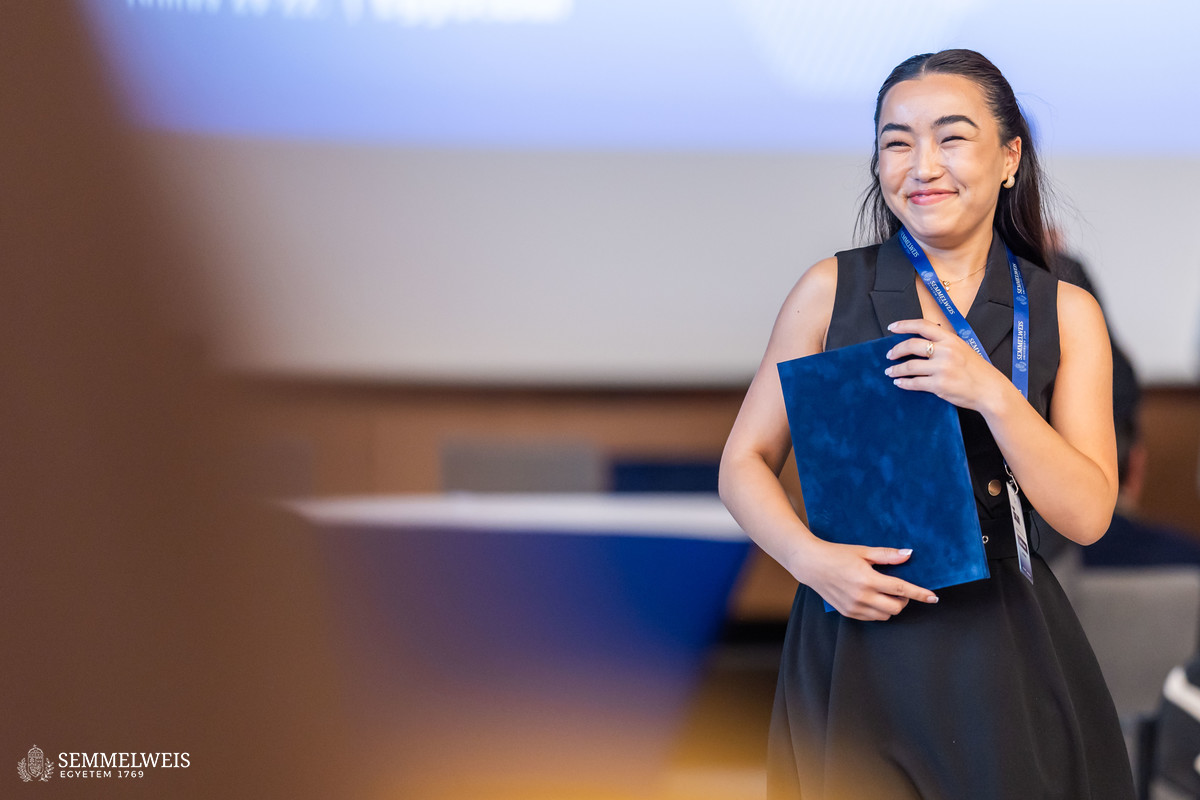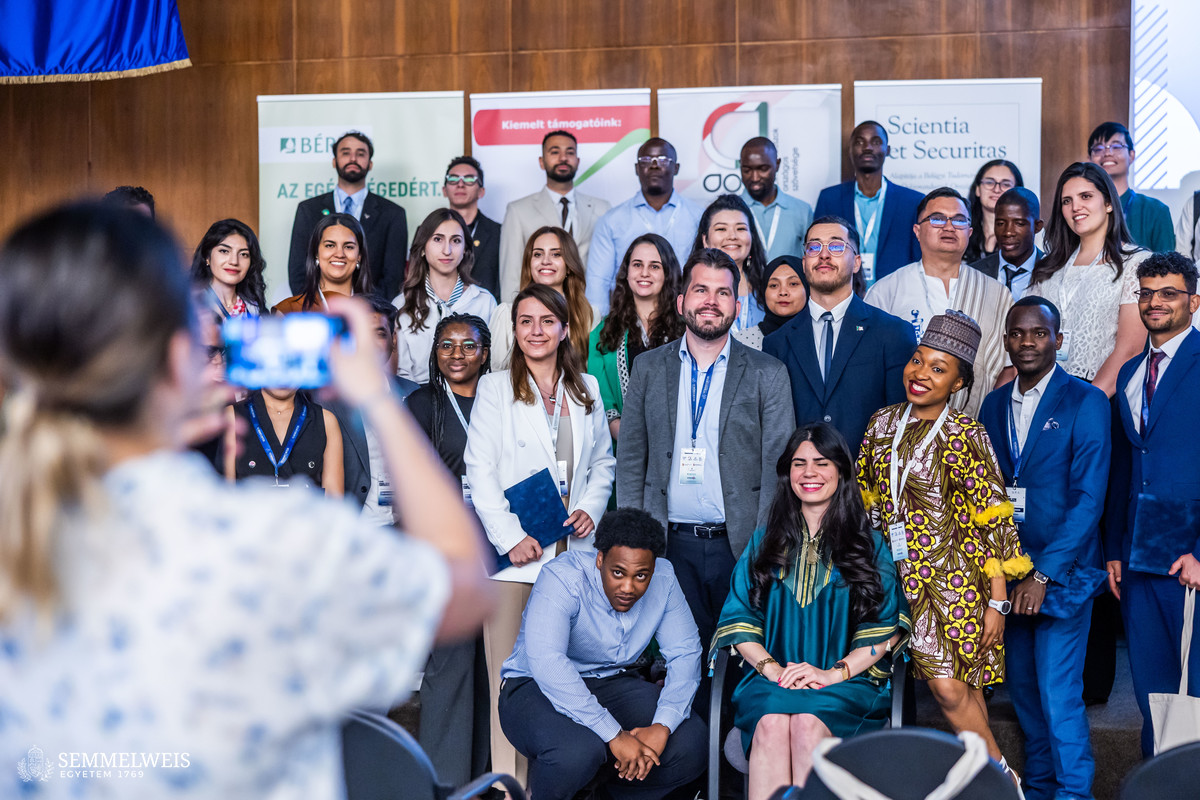“Today, no groundbreaking idea can stand alone. The greatest scientific achievements and pioneering research are the result of collaboration across borders and disciplines. It is therefore of particular significance that representatives of nearly every discipline are speaking at this conference,” said Dr. Béla Merkely, Rector of Semmelweis University and President-elect of the Hungarian Rectors’ Conference (MRK) at the opening of the 28th Spring Wind Conference. This year, Semmelweis University hosted the traditional multidisciplinary international conference, which was organized by the Association of Hungarian PhD and DLA Candidates. The conference, whose working languages were English and Hungarian, was open to master’s students, doctoral candidates, and early-career researchers. The rector emphasized that the next generation of researchers and teachers, as well as the academic performance of universities, depended on talented young researchers and Ph.D. students.
At Semmelweis University, we have been working hard to increase participation in our Ph.D. program, including among international students. We have achieved significant results in this area in recent years. – Dr. Béla Merkely
“This international gathering of young Hungarian researchers and doctoral students, now in its 28th edition, provides an opportunity for participants to share research results, draw inspiration from each other’s work, and collectively shape future scientific directions,” the rector added.
The number of participants in Hungarian doctoral programs has nearly doubled over the past ten years to more than 11,000, and nearly one in three PhD students are international, which also highlights the international competitiveness of these programs, said László Bódis, Deputy State Secretary for Innovation. In the long run, the government aims to increase the number of students completing a doctorate from six out of ten to eight out of ten. He then introduced the new three-tier system of doctoral training starting in September and the recently launched National Research Excellence Program, where PhD students can join excellence-based research initiatives.
Dr. Valéria Csépe, an academician and the outgoing president of the Hungarian Accreditation Committee (MAB), emphasized that accreditation processes and evaluations were becoming increasingly important globally and should always focus on student-centeredness.
The academic added that Hungary’s highest rating in the European Quality Assurance Register for Higher Education was due to the fact that all accreditation procedures and MAB bodies included international experts and student delegates from DOSZ and the National Conference of Students’ Unions (HÖOK).
“Doctoral studies are the pinnacle of higher education, bringing together the best and brightest minds who are passionate about contributing to scientific knowledge. Semmelweis University was one of the first to recognize that doctoral programs cannot be standardized and was able to significantly increase the number of participants by adapting to student needs,” said Dr. Zoltán Benyó, President of the Doctoral Council at Semmelweis and President of the Hungarian Doctoral Council. He said that, for the first time this year, the number of students earning a degree from the university was expected to reach 200, while more than 1,200 were enrolled in doctoral programs. He considers the government’s administrative ease opportunities extremely important because they allow students to access what is most useful to them.
Dr. Tamás Weiszburg, President of the National Student Research Conference (OTDK), noted with pleasure that the number of papers submitted for this year’s conference increased by 20 percent, reaching 5,700. He cited the fact that this year, five new members of the Hungarian Academy of Sciences had previously been awarded the Pro Scientia Gold Medal by OTDT as an example of the TDK initiative’s commitment to science.
“For the past 31 years, DOSZ has been shaping doctoral education. Starting in September, it will monitor the operation of this new form of training. If fine-tuning is necessary, DOSZ will make a proposal as soon as possible,” said DOSZ President Dániel Molnár.
Dr. Péter Vámosi, President of the Doctoral Students’ Union (DÖK) at Semmelweis University, thanked the university’s management and the staff of DOSZ for backing the institution to host the two-day Spring Wind Conference this year. The meeting, whose working language was English and Hungarian and consisted of some 40 sessions, took place at the Nagyvárad Square Theoretical Block (NET) and the Basic Medical Science Center (EOK).
In his talk, “Mentors and Mentees,” Rector Dr. Béla Merkely provided a comprehensive overview of the intellectual legacy of Semmelweis University and shared some essential data about the institution’s educational, research, and patient care operations. He shared statistics showing that the university’s scientific output, as measured by Q1-Q4 publications and CNCI impact, increased steeply with the number of doctoral students enrolled.
In the last 10 years, the number of PhD students at Semmelweis University has tripled, reaching 1,201 in the 2024-2025 academic year. Of those students, 400 are international, including nearly 60 on Stipendium Hungaricum scholarships.
He emphasized that a quarter of PhD students participate in the university’s translational medicine program. In addition to offering scholarly knowledge, the program focuses on soft skills and provides a statistical backup team to ensure that research results can be applied at the bedside as soon as possible. In the second half of his presentation, Dr. Béla Merkely detailed the crucial role his mentors played in his scientific career and the research areas in which he and his mentees have established an intellectual workshop at the Városmajor Heart and Vascular Center since the 1990s.
“We consider doctoral degrees obtained through Stipendium Hungaricum scholarships to be an investment in the future. We also consider the successful integration of international students and strengthening international relations to be of paramount importance,” said Dr. István Perosa, Head of Department for the Stipendium Hungaricum Scholarship Programme at the Ministry of Foreign Affairs. He added that over 2,000 international students currently studying in Hungary were enrolled in various doctoral programs.
During the opening ceremony, the Association of Hungarian PhD and DLA Candidates signed a cooperation agreement with the Hungarian Development Promotion Office. The president of DOSZ and Dr. István Perosa then gave letters of credence to the organization’s 43 ambassadors.
Melinda Katalin Kiss
Translation: Judit Szabados-Dőtsch
Photos by Bálint Bálint – Semmelweis University
